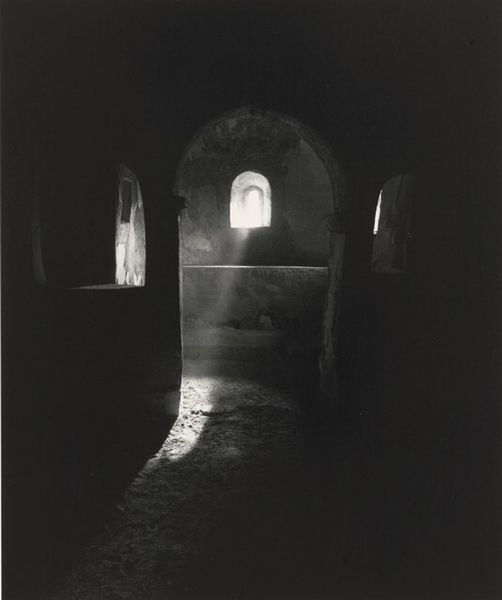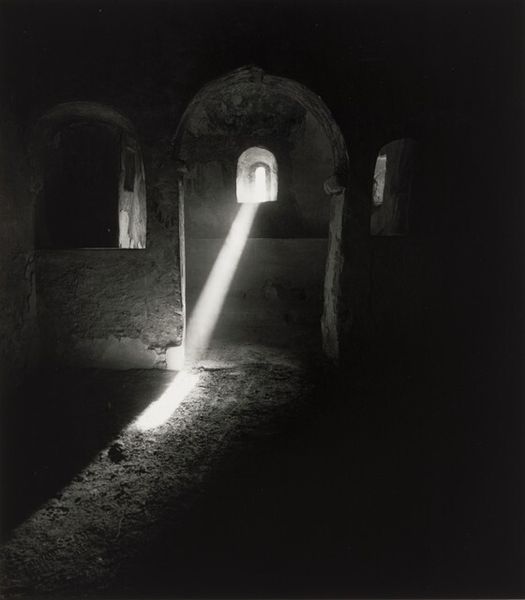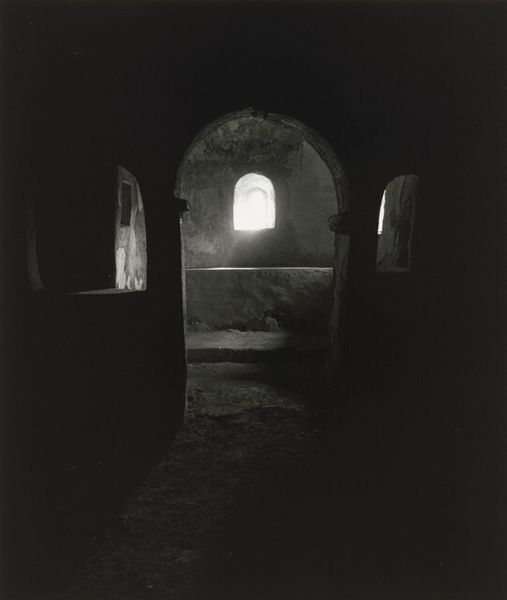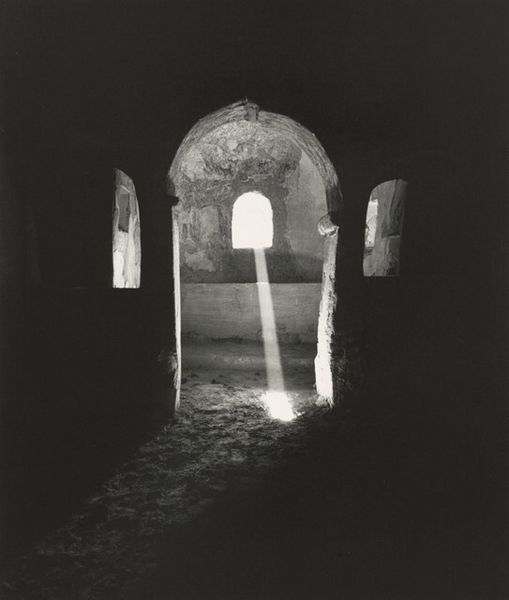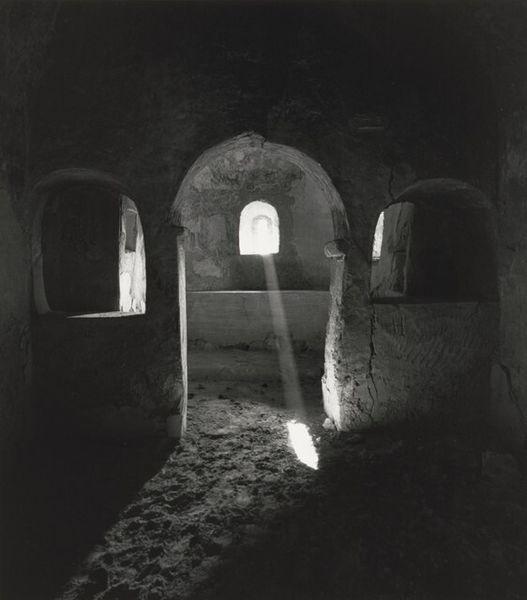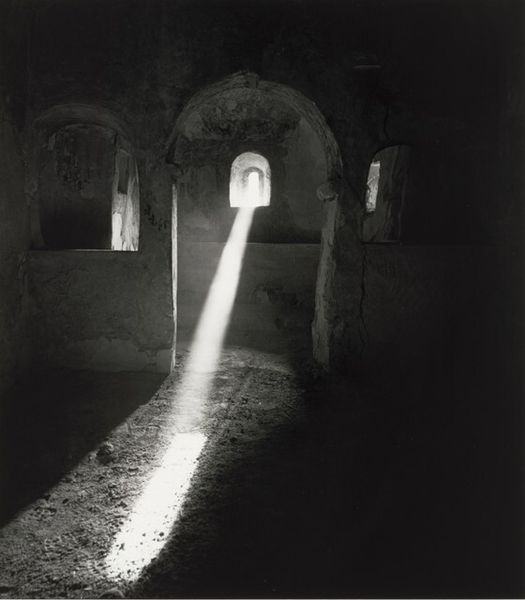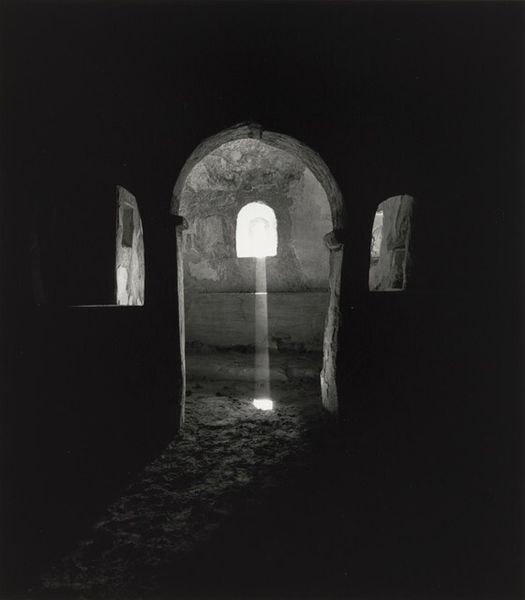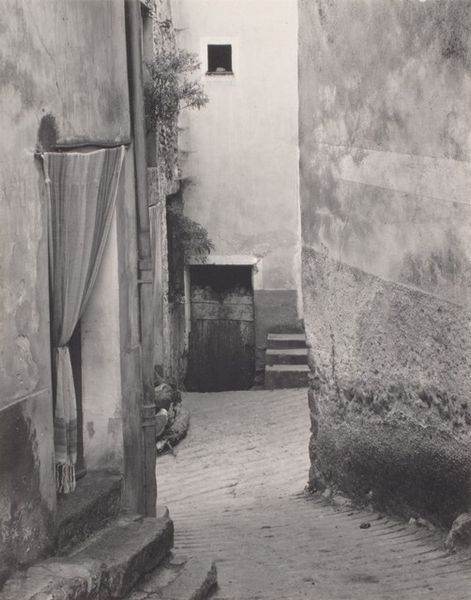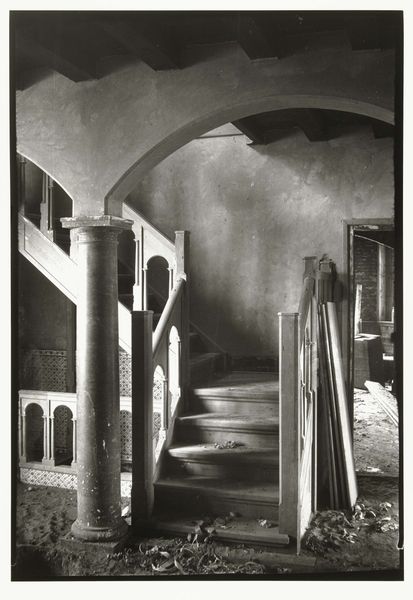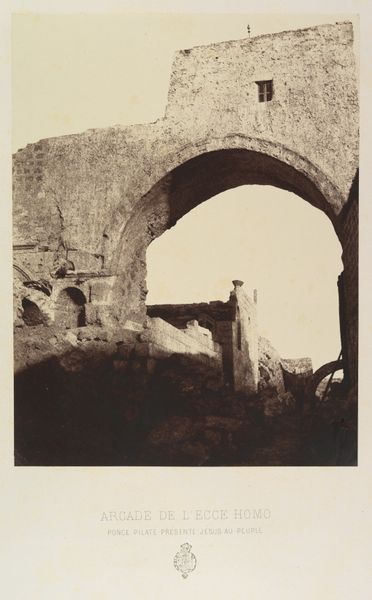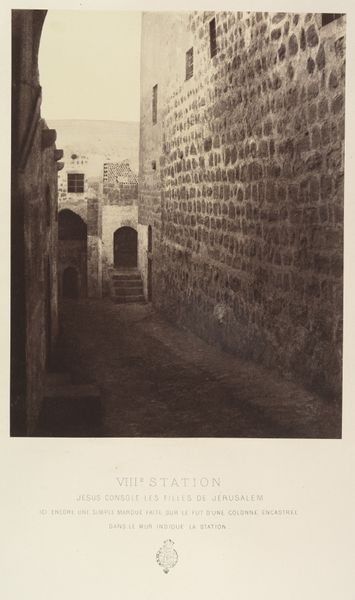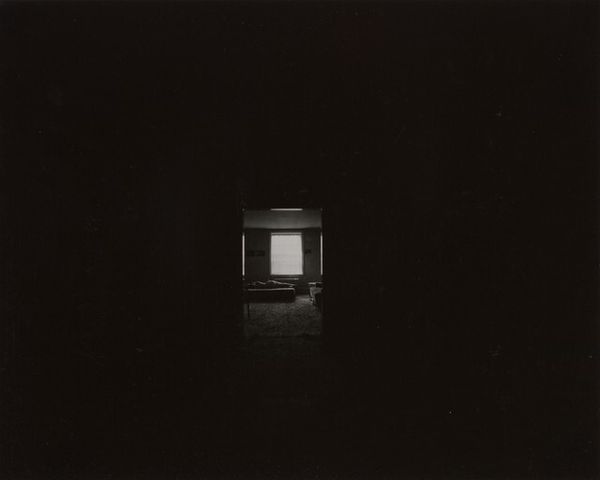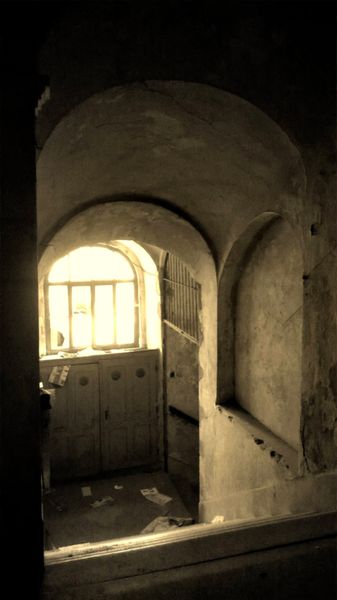
Esteban de Viguera, April 28, 1992, 9:30 - 11:00 a.m. 1992
0:00
0:00
photography, site-specific, gelatin-silver-print
#
conceptual-art
#
black and white photography
#
sculpture
#
landscape
#
black and white format
#
photography
#
black and white
#
chiaroscuro
#
site-specific
#
gelatin-silver-print
#
monochrome photography
#
monochrome
#
monochrome
Dimensions: image: 28.26 × 24.13 cm (11 1/8 × 9 1/2 in.) sheet: 40.32 × 30.48 cm (15 7/8 × 12 in.)
Copyright: National Gallery of Art: CC0 1.0
Curator: Ursula Schulz-Dornburg's "Esteban de Viguera, April 28, 1992, 9:30 - 11:00 a.m." a gelatin silver print created in 1992, captures a haunting architectural space. What are your initial thoughts? Editor: Stark. The strong contrast is immediate. That intense ray of light almost feels like a physical entity. It’s austere but somehow inviting. Curator: I agree, the chiaroscuro effect definitely guides the eye. It is an incredibly balanced composition that speaks to Schulz-Dornburg's conceptual framework of capturing the human-altered landscape, with themes related to abandonment, periphery and borderlands. We see the sun illuminating what could be read as a sacred, architectural remain. What readings can we attribute to the act of documenting and showcasing ruins? Editor: Well, speaking materially, gelatin silver prints, especially from this era, involve specific labor processes, from the silver mining to the darkroom development. Seeing the light activate the silver halide crystals feels incredibly related to the passage of time, as you mentioned. It reveals structure, but also decay. Light exposes. In relation to the specific geography that you mentioned, where might this be? What were these stones, mortar and manual labor used for? Curator: Viguera is a region within La Rioja, Spain. Knowing this context shifts our interpretation slightly, doesn’t it? This image intersects with Spanish history and questions of sacred spaces and their changing uses and implications throughout time. The conceptual precision she brought into this captures these temporal shifts and cultural implications quite directly, and it's not a spontaneous or arbitrary shot, it's April 28, 1992, 9:30 to 11:00 a.m., exactly. The time is crucial. The light, geometry, place, and capture merge and connect in such a beautiful way. Editor: It also poses questions around value, what do we choose to memorialize with photographs, and how. This ruin becomes important. How do we think of other contemporary photographs from La Rioja? Where might labor appear, and where disappear? Curator: Exactly. I think it allows for a compelling, even poignant analysis when we center these details together in understanding photographic practice. Editor: Indeed. The layers of the photograph's own making add to the architectural and cultural history, resulting in a potent object.
Comments
No comments
Be the first to comment and join the conversation on the ultimate creative platform.
